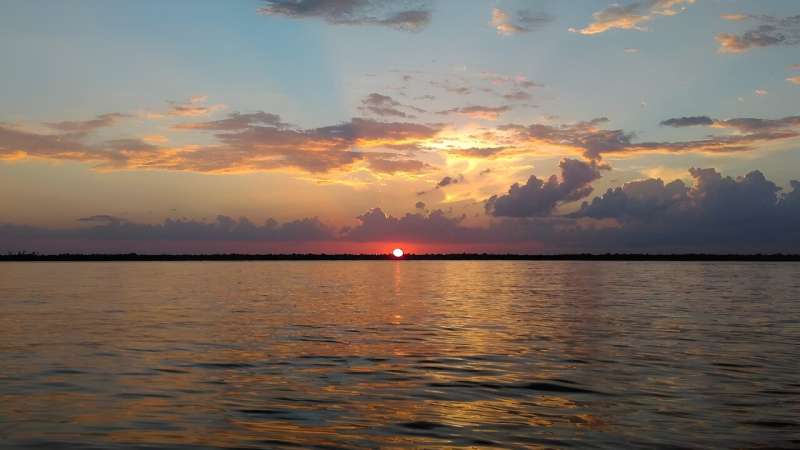Biogeochemical insights from a major Amazonian river

Rivers provide water to billions of people and are critical linkages between continental ecosystems and oceans. Every run and every riffle reshape the surrounding landscape as a river transports nutrients and sediment downstream. Yet many rivers, including large tributaries in the Amazon Basin, the largest river basin in the world, are understudied. The resulting data gap casts uncertainty onto carbon budgets and nutrient flux estimates at both regional and global scales.
One such understudied river, the Tocantins River in Brazil, drains both Amazon and Cerrado biomes and empties into the Atlantic Ocean, where it mixes with the vast plume of water emerging from the Amazon and Pará Rivers. Loss of native vegetation cover in the Tocantins Basin, which represents 11% of Brazil's land mass, has been driven by agricultural and hydroelectric development and has been so pervasive that it has altered the basin's hydrologic regime.
In new research, Vania Neu and colleagues studied water quality, carbon and nutrient cycling in the region, and biogeochemical fluxes to the ocean—and whether these traits have been affected by land use changes. Taking monthly samples from the Tocantins River for more than two years, they measured the composition and transport of carbon, nitrogen, and suspended sediment to establish the basin's biogeochemical characteristics. The findings are published in the Journal of Geophysical Research: Biogeosciences.
The findings show that the Tocantins River contributes 3% of dissolved carbon and 3.7% of dissolved nitrogen to the total Amazon River plume and that seasonal fluctuations largely dictate the river's carbon and nitrogen composition. During the rainy season, organic matter enters the river from the terrestrial environment. In the dry season, however, water chemistry is more closely tied to algal and planktonic decomposition. The research did not establish clear connections between human impacts on the surrounding landscape, like deforestation, and water chemistry.
The research represents the first detailed evaluation of carbon and nitrogen in the Tocantins River, providing baselines that will be central to understanding human-driven environmental change in the basin in the future, the authors say. The work also highlights the need for investigations into other understudied rivers worldwide, particularly in the tropics.
More information: Vania Neu et al, Composition and Flux of Dissolved and Particulate Carbon and Nitrogen in the Lower Tocantins River, Journal of Geophysical Research: Biogeosciences (2023). DOI: 10.1029/2022JG006846
Provided by American Geophysical Union
This story is republished courtesy of Eos, hosted by the American Geophysical Union. Read the original story here.
No comments:
Post a Comment